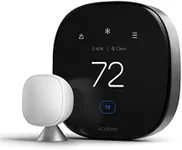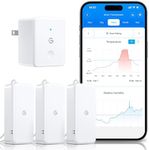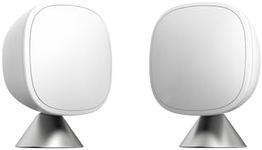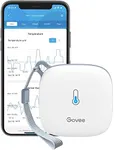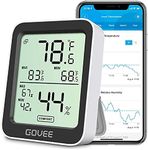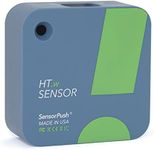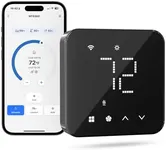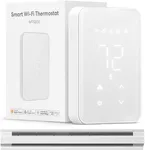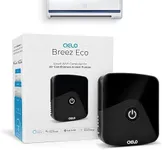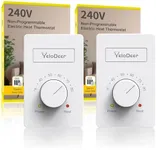Buying Guide for the Best Smart Temperature Sensor
Choosing the right smart temperature sensor can greatly enhance your ability to monitor and control the climate in your home or office. These devices can help you maintain a comfortable environment, save energy, and even protect your property from extreme temperatures. To make an informed decision, it's important to understand the key specifications and how they align with your specific needs.AccuracyAccuracy refers to how close the sensor's readings are to the actual temperature. This is important because more accurate sensors provide more reliable data, which is crucial for maintaining a comfortable and energy-efficient environment. Accuracy is usually measured in degrees, with a lower number indicating higher precision. For general home use, an accuracy within ±1°C is typically sufficient. If you need more precise measurements, such as for a laboratory or greenhouse, look for sensors with an accuracy within ±0.5°C or better.
RangeThe range of a temperature sensor indicates the minimum and maximum temperatures it can measure. This is important to ensure the sensor can handle the environmental conditions where it will be used. For most indoor applications, a range of -10°C to 50°C is adequate. For outdoor use or extreme environments, you might need a sensor with a broader range, such as -40°C to 85°C. Consider the typical and extreme temperatures of your location when choosing a sensor with the appropriate range.
ConnectivityConnectivity refers to how the sensor communicates its data to other devices, such as a smartphone or a smart home hub. Common connectivity options include Wi-Fi, Bluetooth, and Zigbee. Wi-Fi allows for remote monitoring from anywhere with an internet connection, making it ideal for users who want to check temperatures while away from home. Bluetooth is suitable for short-range monitoring and is often easier to set up. Zigbee is a good choice for users with a smart home ecosystem that supports this protocol, as it offers low power consumption and reliable performance. Choose the connectivity option that best fits your existing devices and how you plan to use the sensor.
Power SourceThe power source of a temperature sensor can affect its placement and maintenance. Sensors can be battery-powered, plug-in, or solar-powered. Battery-powered sensors offer flexibility in placement but require periodic battery changes. Plug-in sensors provide continuous power but need to be near an outlet, which can limit placement options. Solar-powered sensors are ideal for outdoor use and are environmentally friendly, but they depend on sunlight to function effectively. Consider where you plan to place the sensor and how often you are willing to maintain it when choosing the power source.
Integration with Other SystemsIntegration refers to the sensor's ability to work with other smart home systems and devices. This is important for creating a seamless and automated home environment. Look for sensors that are compatible with popular smart home platforms like Amazon Alexa, Google Assistant, or Apple HomeKit. This allows you to use voice commands, set up automation routines, and integrate the sensor's data with other smart devices, such as thermostats and security systems. Choose a sensor that fits well with your existing or planned smart home ecosystem to maximize its functionality.
Data Logging and AlertsData logging refers to the sensor's ability to record temperature data over time, while alerts notify you of significant changes or extreme conditions. These features are important for tracking trends, identifying issues, and taking timely action. Sensors with data logging can provide historical data, which is useful for analyzing patterns and making informed decisions. Alerts can be sent via app notifications, emails, or text messages, ensuring you are promptly informed of any critical changes. Consider how you plan to use the data and how important real-time alerts are for your needs when choosing a sensor with these features.

